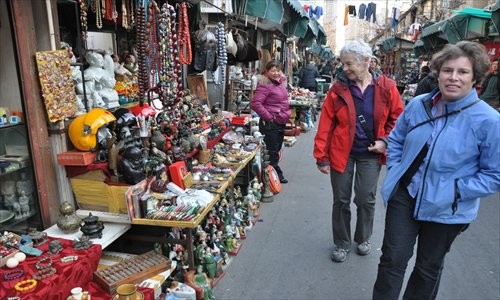Antique Hunt in Shanghai
Take a stroll down Shanghai's Dongtai Road and it's like traveling back in time to a long-disappeared China of old.
Hundreds of antique stalls and shops line this "Old City" street making it a hot spot for tourists, residents and locals alike. It is also a popular destination for producers looking for period props for television shows and plays.
As one of the country's most famous antique markets, along with Beijing's Liuli Factory market, it offers a selection of genuine old-styled craftworks, as well as many copycat antiques, many of which are indistinguishable from the real thing.
Dongtai Road was built in 1902 under its original name of Taishan Road. In 1906 it became Rue Hennequin until it acquired its present name in 1943. Located in the former Luwan district (now Huangpu district), this less-than-600-meter road runs north to Chongde Road and south to Zhaozhou Road, near Xizang Road South and Fuxing Road Middle.
 |
|
Dongtai Road is flooded with old-styled craftworks and copycat antiques. [Photo/Global Times] |
On the move
The history of the antique market can be traced back to late 1980s, when many of the individual antique vendors were moved here from a neighboring street by the local government. It then became an official, licensed market specializing in antique and craftwork trading. Previously Dongtai Road housed a smaller market selling flowers and pet birds.
In the early days, the vast majority of traded goods were genuine Chinese antiques but today the market has been flooded with imitation, mass-produced copies of such items, as well as purely decorative craftworks. In fact genuine antique lovers and buyers largely steer clear of the market today.
But, nevertheless, the road remains a stylish tourist attraction and a great place to browse. And the items on sale offer a fascinating insight into the history of Chinese decorative arts.
Among the vast number of eclectic items on sale are examples of calligraphy, erotica, dragon-shaped bronze adornments and portraits of ancient Chinese emperors. In fact all aspects of what is referred to as China's "Four Treasures of the Study" (brush, ink, paper and ink stone works) can be found here.
Busts and statues of Buddhas, in various sizes and materials - mainly bronze and wood - are among the most commonly seen items at the market.














